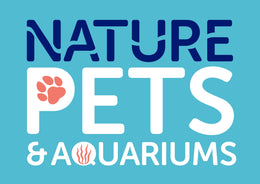McDonald Lake boulder is a colourful stone that brings a unique riverbed impression to your aquarium or terrarium. With colors ranging from dark red to maroon, and from green to blue and black, it adds a stunning visual appeal to any aquascape.
-
Description
McDonald Lake boulder is a rare and unique stone. Its name it’s a tribute to the Glacier National Park's biggest lake in Montana, USA. It is a colorful boulder that can add a stunning visual appeal to your aquarium or terrarium, creating a unique riverbed impression. With colors ranging from dark red to maroon, and from green to blue and black, it adds a unique and beautiful touch to any aquascape.
The colored stones of Lake McDonald owe their colors to the iron content in sedimentary pebble rocks and the degree of its oxidation. The rocks were formed for millions of years under different conditions, resulting in the beautiful colors seen today. The lake rocks were then ground into small colored pebbles by giant ice blocks during the Ice Age, which were then brought into the valley by streams of meltwater.
McDonald Lake boulder is available in mix sizes from 10 to 30 cms, and it can be complemented with McDonald Lake Nano Boulders. Some boulders may raise pH and hardness slightly. Regular water changes are enough to keep the hardness under control.
-
Key Points
-
Characteristics
-
Usage
- It can be used in both aquatic and terrarium environments.
- Rinse rocks and stones with water before use. Use a brush to clean it before introducing the stones in the aquarium.
- Avoid placing rocks directly on the glass as they can be very heavy and sharp. Instead, place substrate or our LandForms before placing the hardscape to help fix the exact stone position with more freedom.
- Always secure the stones, especially when placing one rock on top of another, you can do so with our ScapeBound, as the top rock may move or fall during regular maintenance, harming your dwellers or even breaking the aquarium.
- Position stones a few centimeters/inches away from aquarium glass walls to facilitate maintenance.
- Control any alterations in pH and kH by regular water changes with osmotic or soft water, or by using a water softener if necessary.
- Safe for fish, shrimps, and other aquatic animals








